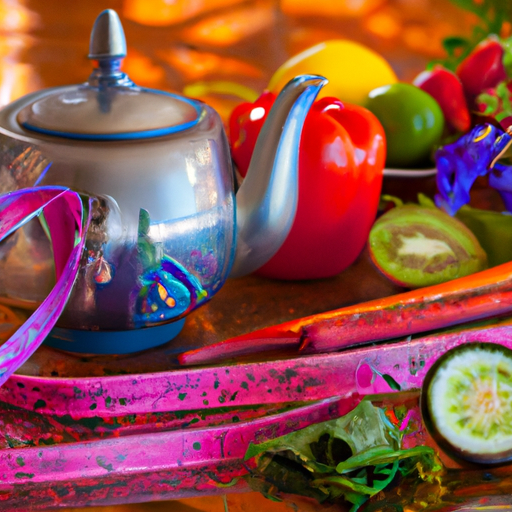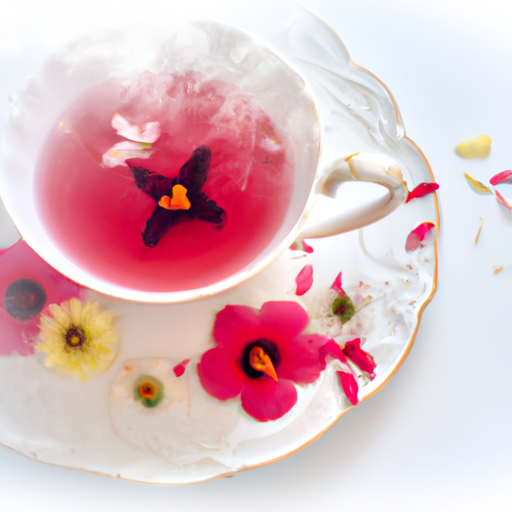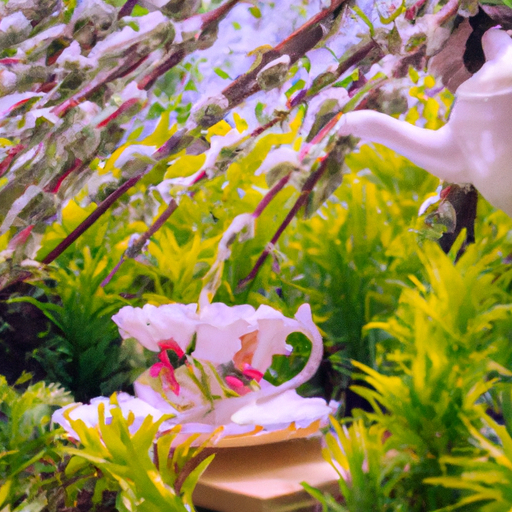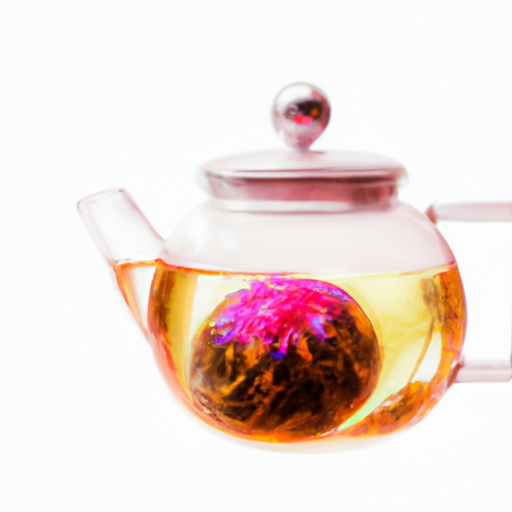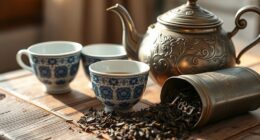Have you ever eagerly awaited the blooming of your hybrid tea roses, only to be disappointed when they refuse to flower on the second year?
It can be incredibly frustrating, especially after dedicating time and effort into cultivating these beautiful plants. As an avid gardener and rose enthusiast, I understand the importance of a bountiful bloom, which is why I have delved into the science behind this perplexing phenomenon.
In this article, I will unravel the mystery of why hybrid tea roses may not flower on the second year, providing you with valuable insights and solutions to ensure a stunning display of blooms in your garden. From understanding the blooming cycle and implementing proper pruning techniques to optimizing sunlight, soil conditions, and pest prevention, I will guide you through the meticulous process of encouraging your hybrid tea roses to flourish.
Get ready to unlock the secrets to successful rose cultivation and indulge in a symphony of colors and fragrances in your garden.
Key Takeaways
- Hybrid tea roses may not flower in the second year due to their focus on establishing a strong root system and developing foliage in the first year.
- Proper pruning techniques in early spring can encourage abundant flowering in hybrid tea roses.
- Hybrid tea roses require a minimum of six hours of direct sunlight per day and prefer well-drained soil with a pH level between 6.0 and 6.5.
- Fertilizing hybrid tea roses with a balanced rose fertilizer in early spring and late summer can increase bloom production by up to 50%.
Understanding the Blooming Cycle of Hybrid Tea Roses
So, you’re wondering why your hybrid tea roses don’t flower in their second year, huh? Well, let me enlighten you about the blooming cycle of these delicate beauties.
Hybrid tea roses have a distinct growth pattern that affects their flowering. In their first year, they focus on establishing a strong root system and developing healthy foliage. This means they may not produce many flowers during this time. However, in the second year, with proper rose care and pruning techniques, they should start blooming abundantly.
To encourage flowering, proper pruning techniques are essential. Pruning helps remove dead or diseased wood, improves air circulation, and stimulates new growth. It’s best to prune hybrid tea roses in early spring, before new growth begins. Remove any weak or crossing branches, and cut back the remaining canes to about 6-8 inches. This encourages strong, healthy growth and more abundant flowering.
Now, let’s delve into the proper pruning techniques for encouraging flowering without further ado.
Proper Pruning Techniques for Encouraging Flowering
To encourage flowering, you’ll want to learn proper pruning techniques. Pruning plays a crucial role in the growth and development of hybrid tea roses. Here are three sub-lists that will help you improve your pruning skills and ensure a bountiful bloom:
Timing:
- Prune in late winter or early spring before new growth begins.
- Remove any dead or damaged wood.
- Cut back one-third of the plant’s height to promote new growth.
Technique:
- Use sharp, clean pruning shears to make clean cuts.
- Cut at a 45-degree angle, just above an outward-facing bud.
- Remove any suckers or weak branches that may divert energy from flowering.
Avoiding pruning mistakes:
- Don’t over-prune; it can stunt growth and reduce flowering.
- Avoid pruning in the fall, as it may encourage new growth that won’t survive winter.
Improving soil fertility and providing adequate sunlight and soil conditions are essential for the overall health and flowering success of hybrid tea roses.
Providing Adequate Sunlight and Soil Conditions
Ensuring your rose plants receive enough sunlight and have the right soil conditions is crucial for their health and blooming success. Hybrid tea roses require a minimum of six hours of direct sunlight per day to thrive. This sunlight provides them with the energy they need to produce flowers.
When selecting a location for your roses, choose a spot that receives full sun throughout the day. In terms of soil composition, hybrid tea roses prefer well-drained soil that’s rich in organic matter. The soil should have a pH level between 6.0 and 6.5, which is slightly acidic. Amending the soil with compost or well-rotted manure can help improve its texture and fertility.
With the right amount of sunlight and proper soil conditions, your hybrid tea roses will have the best chance of producing abundant blooms.
Moving on to fertilizing and watering tips for optimal blooms…
Fertilizing and Watering Tips for Optimal Blooms
When it comes to fertilizing and watering your rose plants, you’ll be amazed to learn that providing the right nutrients and hydration can increase the number of blooms by up to 50%.
Fertilizing your hybrid tea roses is crucial for optimal bloom production. Use a balanced rose fertilizer with a ratio of 10-10-10 or 12-12-12, applying it in early spring and again in late summer.
Additionally, deadheading is essential for continuous blooming. By removing spent flowers, you encourage new growth and prevent energy from being wasted on seed production.
Temperature also plays a significant role in flower production. Hybrid tea roses thrive in temperatures between 60 and 70 degrees Fahrenheit. Extreme heat or cold can hinder blooming.
Now, let’s delve into pest and disease prevention for healthy plants.
Pest and Disease Prevention for Healthy Plants
Maintaining a healthy garden involves keeping pests and diseases at bay to ensure your plants thrive. When it comes to hybrid tea roses, prevention is key. Start by regularly inspecting your plants for any signs of pests or diseases. If you spot any, act quickly and employ organic remedies such as neem oil or insecticidal soap to control the infestation.
Another effective strategy is to encourage natural predators like ladybugs and lacewings, which feed on common rose pests like aphids and thrips. Additionally, practicing good sanitation, such as removing fallen leaves and debris, can help prevent the spread of diseases.
By implementing these pest and disease prevention methods, you’ll be well on your way to enjoying healthy and blooming hybrid tea roses. Now, let’s delve into overwintering strategies to protect your roses.
Overwintering Strategies to Protect Your Roses
Don’t let winter weather ruin your beautiful roses – learn how to protect them with these overwintering strategies!
Winter protection is crucial for ensuring the survival and health of your roses. One important step is to choose hardy rose varieties that are specifically bred to withstand cold temperatures. These varieties have the ability to go dormant during winter and then resume growth in the spring.
Additionally, you can provide extra insulation by mulching around the base of the plants with a layer of organic material, such as straw or wood chips. This will help regulate soil temperature and protect the roots from freezing.
Pruning your roses in late fall or early winter can also help prevent damage from strong winds and heavy snow.
By implementing these overwintering strategies, you can safeguard your roses and ensure they thrive come springtime.
Now, let’s explore some troubleshooting common issues for non-flowering roses.
Troubleshooting Common Issues for Non-Flowering Roses
To troubleshoot common issues for non-flowering roses, you should first assess their sunlight, water, and nutrient needs.
Lack of proper sunlight is a common reason for roses not blooming. Hybrid tea roses require at least six hours of direct sunlight each day to produce flowers. If your roses aren’t getting enough sunlight, consider pruning nearby plants or trees to increase the amount of light they receive.
Another common issue is inadequate watering. Roses need consistent moisture, but not excessive watering, as this can lead to root rot. Ensure that your roses receive about an inch of water per week, either from rainfall or manual watering.
Lastly, nutrient deficiencies can also cause non-flowering roses. Make sure your roses are receiving the necessary nutrients, particularly nitrogen, phosphorus, and potassium. Regularly fertilize your roses with a balanced rose fertilizer to promote healthy growth and blooming.
By addressing these factors, you can troubleshoot and resolve the lack of blooms in your roses.
Frequently Asked Questions
How long does it typically take for hybrid tea roses to start flowering after being planted?
Hybrid tea roses typically start flowering within the first year after being planted, given proper care. To ensure success, it is essential to know how to care for hybrid tea roses and avoid common mistakes when planting them.
Can hybrid tea roses be grown in containers?
Growing hybrid tea roses indoors in containers is a fantastic idea! The benefits of container gardening for these roses are immense. Not only does it allow for better control over soil conditions and temperature, but it also provides convenience and flexibility in terms of placement and maintenance.
What is the best time of year to prune hybrid tea roses?
The best time to prune hybrid tea roses is in early spring, before new growth emerges. Use sharp, clean pruning shears to remove dead or weak wood, and make cuts at a 45-degree angle just above a bud.
Are there any specific soil amendments that can help promote flowering in hybrid tea roses?
To promote flowering in hybrid tea roses, specific soil amendments can be used. These amendments, such as compost and organic matter, provide essential nutrients and improve soil structure, creating an ideal environment for the roses to bloom abundantly.
What are some common pests and diseases that affect hybrid tea roses and how can they be prevented?
Common rose pests include aphids, thrips, and black spot disease. To prevent them, I recommend regular inspection, pruning infected parts, and using organic insecticides or fungicides. Proper irrigation and good air circulation are also essential for preventing diseases.
Conclusion
In conclusion, understanding the blooming cycle of hybrid tea roses is essential for ensuring a bountiful display of flowers year after year. By employing proper pruning techniques, providing adequate sunlight and soil conditions, and implementing effective fertilizing and watering practices, your roses will thrive and produce stunning blooms.
Additionally, taking preventive measures against pests and diseases, as well as implementing overwintering strategies, will further protect your plants. With these strategies in place, your non-flowering roses will transform into vibrant, resplendent beauties that will captivate the senses and bring joy to any garden.


